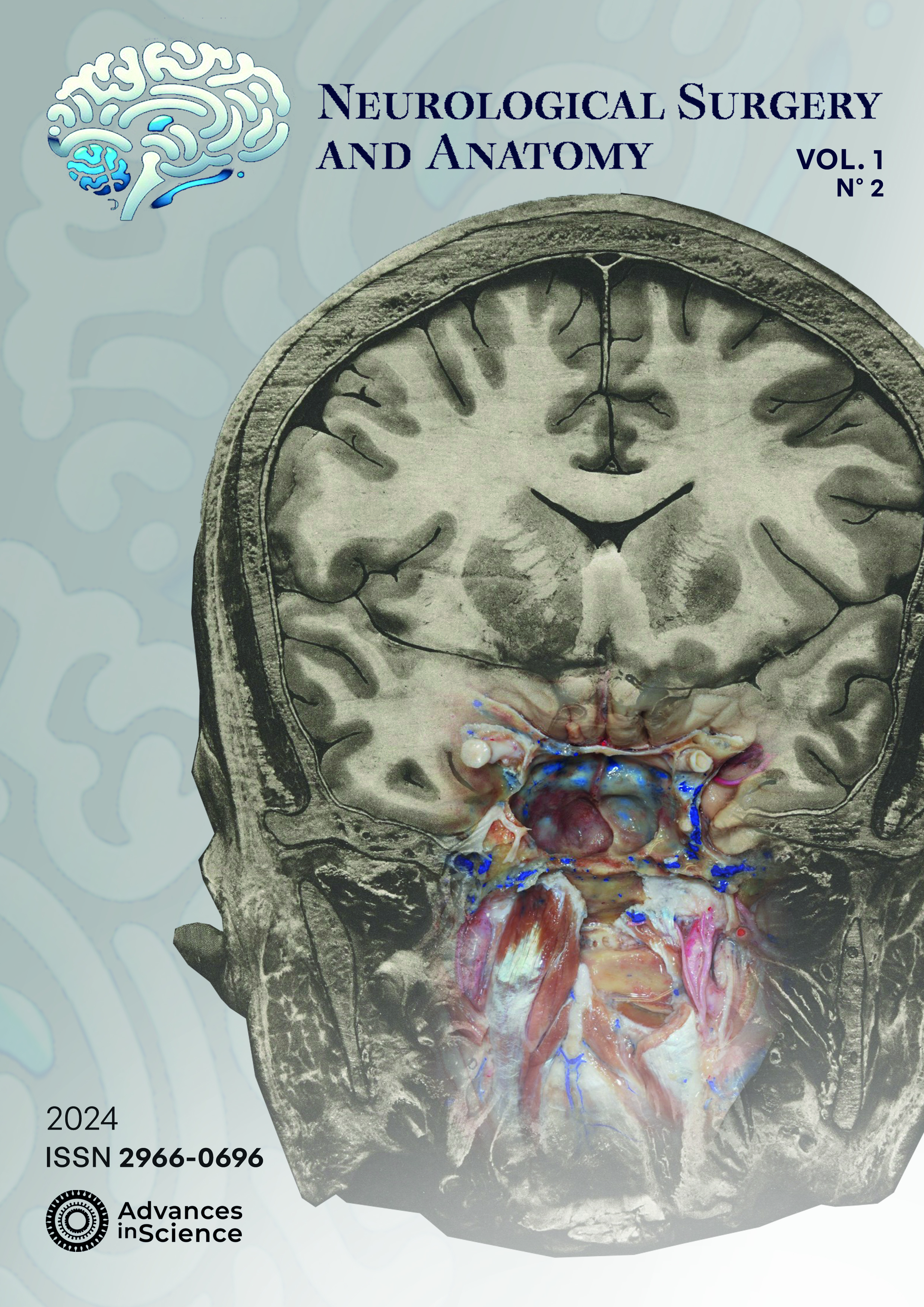A handy tool to teach microneurosurgical anatomy of uncus
Views: 118DOI:
https://doi.org/10.37085/nsa.2024.15Keywords:
Continuing Medical Education, Neuroanatomy, Parahippocampal Gyrus, Hippocampus, NeurosurgeryAbstract
Background
Detailed anatomical knowledge of the parahippocampal gyrus and uncus is paramount to neurosurgeons. Mesial temporal and limbic anatomy are an integral part of the microneurosurgical anatomy curriculum for neurosurgical residents around the world. It is intricate, detailed anatomy and several tools have been used to ease the learning curve on this subject. This paper presents a simple, low-technological mnemonics and frame-model to help learn the microsurgical anatomy of the uncus.
Methods
Microsurgical anatomy of the uncus is presented using cadaveric specimens placed side-by-side to views of the right hand with fingers flexed and the wrist adducted.
Results
By holding the right hand with fingers and wrist flexed, a resemblance of the uncal morphology can be appreciated. The index and second fingers represent the two gyri on the anterior surface of the uncus. The index resembles the semilunar gyrus, the second finger stands for the ambient gyrus, while the space between them accounts for the semianular sulcus (sulcus semiannularis). The three following fingers represent the uncal morphology seen once the parahippocampal lip is removed, by working through the uncal sulcus. The middle finger is the uncinated gyrus, the annular finger, represents the band of Giacomini and the pinky finger represents the intralimbic gyrus.
Conclusion
A “handy,” portable reminder of the microsurgical anatomy of the uncus - a required milestone in neurosurgery – is presented.
References
Bonilha L, Kobayashi E, Mattos JP V., Honorato DC, Li LM, Cendes F. Value of extent of hippocampal resection in the surgical treatment of temporal lobe epilepsy. Arq Neuropsiquiatr. 2004 Mar;62(1):15–20. Doi: 10.1590/S0004-282X2004000100003
Misselbrook D. Thinking About Medicine: An Introduction to the Philosophy of Healthcare. 1st ed. 2024. 1–336 p.
Dehaene S. How We Learn: The New Science of Education and the Brain. Penguin Books; 2021. 1–352 p.
Duvernoy HM, Cattin F, Risold PY. The Human Hippocampus. Berlin, Heidelberg: Springer Berlin Heidelberg; 2013. 1 p. Doi: 10.1007/978-3-642-33603-4
Vries H de. The hippocampal formation in normal aging and Alzheimer’s disease: a morphometric study [Doctorate]. Radboud University; 1990.
Augustinack JC, Huber KE, Postelnicu GM, Kakunoori S, Wang R, van der Kouwe AJW, et al. Entorhinal verrucae geometry is coincident and correlates with Alzheimer’s lesions: a combined neuropathology and high-resolution ex vivo MRI analysis. Acta Neuropathol. 2012 Jan 13;123(1):85–96. Doi: 10.1007/s00401-011-0929-5
Wen HT, Rhoton AL, de Oliveira E, Cardoso ACC, Tedeschi H, Baccanelli M, et al. Microsurgical Anatomy of the Temporal Lobe: Part 1: Mesial Temporal Lobe Anatomy and Its Vascular Relationships as Applied to Amygdalohippocampectomy. Neurosurgery. 1999 Sep;45(3):549–92. Doi: 10.1097/00006123-199909000-00028
Campero A, Tro´ccoli G, Martins C, Fernandez-Miranda JC, Yasuda A, Rhoton AL. Microsurgical Approaches to the Medial Temporal Region: An Anatomical Study. Operative Neurosurgery. 2006 Oct 1;59(suppl_4):ONS-279-ONS-308. Doi: 10.1227/01.NEU.0000223509.21474.2E
Ribas GC. The cerebral sulci and gyri. Neurosurg Focus. 2010 Feb;28(2):E2. Doi: 10.3171/2009.11.FOCUS09245
Kier EL, Fulbright RK, Bronen RA. Limbic lobe embryology and anatomy: dissection and MR of the medial surface of the fetal cerebral hemisphere. AJNR Am J Neuroradiol. 1995 Oct;16(9):1847–53.
El-Falougy H, Benuska J. History, anatomical nomenclature, comparative anatomy and functions of the hippocampal formation. Bratisl Lek Listy. 2006;107(4):103–6.
Pauli EM, Staveley-O’Carroll KF, Brock M V., Efron DT, Efron G. A Handy Tool to Teach Segmental Liver Anatomy to Surgical Trainees. Archives of Surgery. 2012 Aug 1;147(8):692. Doi: 10.1001/archsurg.2012.689









